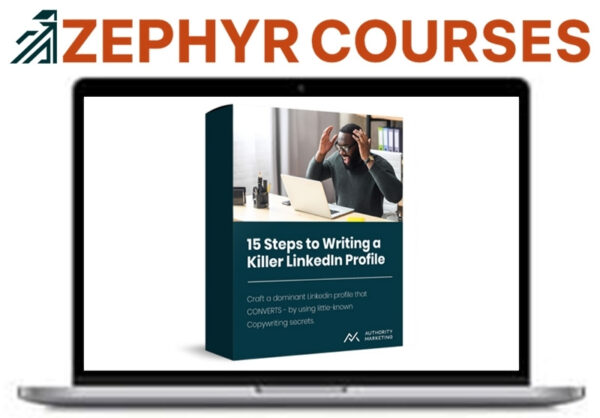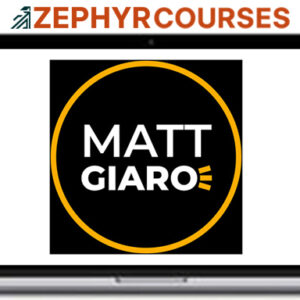Description
Define Your Personal Brand
Clarity in your personal brand sets the foundation for a compelling LinkedIn profile. To stand out, you need to use personal branding strategies that highlight what makes you unique.
Start by defining core values that truly represent who you’re and what drives you professionally. Ask yourself what strengths, passions, and principles guide your work. When you’re clear on these, you can communicate them authentically throughout your profile.
This approach not only attracts the right connections but also helps you align with opportunities that match your goals. Remember, consistency matters—every section of your LinkedIn profile should reflect your values and expertise.
Optimize Your Profile Photo
A professional profile photo instantly shapes how others perceive you on LinkedIn. You want to project confidence, approachability, and credibility, so choose an image where you’re dressed appropriately for your industry.
Make sure your face is clearly visible—avoid group shots or distracting backgrounds to maximize profile clarity. Good lighting is essential; natural light often brings out your best features and enhances visual appeal.
Smile naturally and look directly at the camera to create a sense of connection. Use a high-resolution image so your photo appears crisp on all devices.
Craft a Compelling Headline
Your headline is prime real estate to show what sets you apart, so highlight your unique value right away.
Use impactful keywords that recruiters and clients search for, and don’t forget to mention your top achievements.
This approach grabs attention and reinforces your authority in your field.
Highlight Unique Value Proposition
While many professionals focus on listing job titles, what truly sets you apart is a headline that boldly conveys your unique value. Your headline isn’t just a label; it’s your first impression and a chance to showcase value differentiation.
Instead of simply stating your role, articulate the specific impact you make within your niche focus. For example, don’t just say “Marketing Manager”—highlight what you do differently, like “Driving SaaS Growth Through Targeted Content Strategies.” This approach immediately signals your specialty and why someone should choose you over others.
Use Impactful Keywords
Keywords pack a punch when it comes to LinkedIn headlines—they help you get discovered by the right people and instantly communicate your expertise.
To craft a compelling headline, start with keyword research. Identify the terms your target audience or industry frequently searches for. Don’t just stuff popular words—focus on those with semantic relevance to your skills and services.
This approach guarantees your headline resonates with LinkedIn’s algorithm and real readers, boosting your visibility in search results. Use specific, impactful words that reflect your specialty, such as “Digital Marketing Strategist” or “Leadership Development Coach.”
Avoid generic titles; instead, weave in keywords naturally to highlight your unique value. Remember, a strong, keyword-rich headline is your first opportunity to make a lasting impression.
Showcase Professional Achievements
A strong headline does more than include the right keywords—it also highlights what sets you apart.
When you craft your LinkedIn headline, don’t just list your job title. Use this space to showcase your most impressive professional achievements. Incorporate quantifiable metrics that demonstrate your impact, like “Increased sales by 40%” or “Managed $5M budget.”
Mention any notable awards you’ve earned, such as “Recipient of the 2023 Industry Excellence Award.” By weaving these elements into your headline, you instantly build credibility and authority.
Write an Engaging About Section
Since your LinkedIn About section often shapes first impressions, it’s essential to craft a concise and authentic narrative that highlights your expertise and personality.
Focus on authentic storytelling to set yourself apart—share personal anecdotes that illustrate your journey, values, and what drives you professionally. Instead of listing job titles or generic skills, invite readers to understand your motivations and the unique perspective you bring to your industry.
Use a conversational tone to connect and engage your audience. Let them see not just what you’ve accomplished, but why it matters to you.
Don’t be afraid to show a bit of your personality; it helps build rapport and makes your profile memorable. With an engaging About section, you lay the foundation for true authority marketing.
Highlight Key Skills
Skills are the backbone of your professional brand, showing exactly what you bring to the table. To make your LinkedIn profile stand out, begin with a skills assessment—identify the abilities that set you apart in your industry.
Choose the most relevant skills that align with your goals and the needs of your target audience. Don’t just list generic terms; be specific and strategic. Place your top skills near the top of your profile’s Skills section for maximum visibility.
Encourage colleagues and connections to give you skill endorsements, as these add credibility and authority to your profile. Remember, a well-curated skills section not only attracts recruiters but also reinforces your expertise, making it easier for others to recognize your unique value.
Showcase Your Experience Strategically
While your skills set the stage, your experience tells the story. To stand out on LinkedIn, you need to showcase your career journey with experience alignment, making sure each role you list supports your authority in your field.
Use strategic storytelling—don’t just list job titles and dates. Instead, explain how each position helped you grow, what you contributed, and how it connects to your current professional brand.
Focus on presenting your experience in a way that aligns with your target audience’s needs and expectations. Be clear and concise, highlighting the most relevant duties and projects.
Feature Relevant Accomplishments
Accomplishments set you apart from the crowd and give your profile credibility. When you feature relevant accomplishments on LinkedIn, you’re not just listing duties—you’re highlighting how you’ve made a tangible impact.
Use accomplishment metrics to quantify your success. Instead of saying you “improved sales,” specify that you “increased sales by 25% in six months.” These details give your achievements weight and context.
Achievement storytelling is powerful here; briefly describe challenges you faced, actions you took, and results you delivered. This approach shows employers and clients your problem-solving skills and results-driven mindset.
Don’t overwhelm readers with every success—pick standout accomplishments that relate to your authority and target audience. Thoughtful, metric-driven storytelling will make your profile compelling and memorable.
Personalize Your LinkedIn URL
Although it seems like a small detail, personalizing your LinkedIn URL instantly makes your profile look more professional and easier to share. Instead of a random string of numbers and letters, a custom URL—ideally your name or professional brand—shows you care about your online image.
This simple step supports your overall branding strategy by reinforcing consistency across all platforms. When you add your LinkedIn link to your email signature, business cards, or resume, a clean custom URL looks polished and is easier for others to remember.
To change it, go to your profile settings and select the “Edit public profile & URL” option. Claim your personalized URL before someone else does, and make sure it matches your broader branding strategy for maximum impact.
Gather Strong Recommendations
When you gather recommendations, start by choosing influential endorsers who know your work well.
Ask them to mention specific examples that showcase your strengths and highlight key achievements.
This approach builds trust and instantly boosts your credibility.
Choose Influential Endorsers
Few elements boost your LinkedIn credibility like strong recommendations from influential endorsers. When you want to establish authority, it’s essential to be intentional about who you ask for endorsements.
Focus on influential connections—people whose roles, reputations, or networks can amplify your professional image. Strategic endorsements from respected leaders or recognized industry figures carry much more weight than generic recommendations.
Here’s how you can maximize the impact:
- Identify leaders: Target managers, executives, or well-known industry professionals you’ve worked with directly.
- Prioritize relevance: Choose endorsers whose expertise aligns with your field or target audience.
- Leverage reach: Endorsements from those with broad networks can increase your visibility and signal trustworthiness.
Choose wisely to strengthen your authority marketing strategy.
Request Specific Examples
Once you’ve identified the right endorsers, focus on gathering recommendations that truly showcase your strengths. Don’t settle for vague praise—ask your endorsers to provide LinkedIn examples that highlight your skills in action.
Guide them by reminding them of specific projects, challenges you overcame, or measurable results you achieved together. This approach guarantees their recommendations reinforce your profile strategies and add credibility to your expertise.
When reaching out, be concise and direct. Politely suggest what type of example or story would be most impactful for your LinkedIn profile.
Frame your request so it’s easy for them to recall details, making their endorsement more authentic and persuasive. Strong, specific recommendations will set your profile apart and help you build authority in your field.
Highlight Key Achievements
Achievements make your LinkedIn profile stand out and immediately communicate your value. To showcase your authority, you need to highlight key achievements that resonate with your target audience.
Focus on quantifiable results and notable projects to quickly capture attention. Achievement metrics, like percentages, dollar amounts, or time saved, add credibility to your claims. Strong recommendations that reference these achievements further reinforce your impact.
Here’s how you can effectively highlight your key achievements:
- Use achievement metrics: Quantify your successes to show measurable impact.
- Showcase notable projects: Briefly describe significant projects and your role in their success.
- Gather strong recommendations: Ask colleagues or clients to endorse your contributions, specifically referencing your key achievements.
Keep your highlights relevant, concise, and focused on results.
Display Rich Media and Portfolio Pieces
Visual storytelling elevates your LinkedIn profile by letting you showcase your work through rich media and portfolio pieces. Don’t just tell visitors about your achievements—show them. Upload presentations, videos, images, and documents that highlight your expertise and tangible results.
Rich media lets potential clients and employers see your skills in action, making your profile more engaging and memorable.
Add portfolio pieces directly to your Experience and Featured sections. For example, link to published articles, design samples, or case studies. These visual elements provide proof of your capabilities and set you apart from profiles that rely solely on text.
Use concise captions to explain each item’s relevance. By displaying rich media and portfolio pieces, you give your audience compelling reasons to trust your authority and connect with you.
Use Keywords for Searchability
Showcasing your work with rich media draws attention, but it’s the right keywords that help people find your profile in the first place. To boost your LinkedIn searchability, you need to be intentional about the words you use throughout your headline, summary, and experience sections.
Start with keyword research to understand the terms your target audience is searching for and analyze current search trends in your industry. This strategic approach guarantees you’re not just visible, but visible to the right people.
Here’s how you can use keywords effectively:
- Identify target keywords from job descriptions, industry publications, and competitor profiles.
- Integrate these keywords naturally into your headline, summary, and job titles.
- Regularly update your profile to reflect evolving search trends and skills in demand.
Engage With Industry Content
One of the fastest ways to boost your authority on LinkedIn is to actively engage with industry content. Don’t just scroll—like, comment, and share posts from thought leaders, industry publications, and relevant companies.
This kind of industry engagement helps you stay visible and positions you as someone who’s up to date with trends and insights. Go beyond passive consumption by practicing content curation: share articles, research, or news with your own perspective added.
When you introduce your thoughts, you show expertise and encourage meaningful conversations. Consistent engagement demonstrates that you’re involved and knowledgeable, making you more memorable to your peers.
Build a Targeted Network
How do you turn a good LinkedIn profile into a powerful authority-building tool? It starts by building a targeted network. You need more than just numbers; you need the right connections who can amplify your expertise and credibility.
Use smart network strategies to find and connect with professionals who matter to your niche. Apply effective connection tactics to guarantee every request is intentional and relevant, not random. Here’s how to do it:
- Identify key industry players and thought leaders; follow and engage with them.
- Personalize every connection request, mentioning mutual interests or shared groups.
- Regularly audit your network to remove irrelevant contacts and focus on quality.
A refined, targeted network helps position you as an industry authority and opens doors to new opportunities.
Share Thought Leadership Posts
Share thought leadership posts by curating industry-relevant insights that matter to your audience.
Start expert-level conversations to showcase your knowledge and invite meaningful engagement.
When you highlight your unique perspectives, you set yourself apart as a trusted authority in your field.
Curate Industry-Relevant Insights
Elevate your LinkedIn presence by consistently curating and posting insights that matter to your industry. By focusing on content curation and sharing the latest industry trends, you position yourself as a valuable resource for your network.
Don’t just repost what everyone else is sharing—add your perspective or highlight why the information is important.
Here’s how you can make your insight sharing impactful:
- Spot Key Trends: Regularly monitor reputable sources to identify emerging industry trends, then share your takeaways.
- Curate Quality Content: Select articles, studies, or reports relevant to your audience, and offer a brief summary or your thoughts.
- Showcase Thought Leadership: Choose insights that align with your expertise, reinforcing your authority without oversaturating your feed.
Curate intentionally, and your credibility will grow.
Initiate Expert-Level Conversations
Building on your curated industry insights, it’s time to raise the bar by initiating expert-level conversations through original thought leadership posts.
Don’t just share what others are saying—offer your own analysis, predictions, or solutions to industry challenges. Start expert discussions by posing thought-provoking questions or sharing a bold stance on trending topics.
When you publish these posts, you attract like-minded professionals who want to engage in meaningful dialogue.
Use these opportunities to highlight your expertise and demonstrate your understanding of advanced concepts.
Integrate networking strategies by tagging relevant connections or inviting industry leaders to weigh in, which boosts your reach and credibility.
Highlight Unique Perspectives
While many professionals echo prevailing opinions, you’ll stand out by offering unique perspectives that challenge conventional wisdom.
Sharing thought leadership posts on LinkedIn is your opportunity to demonstrate innovative thinking and authority. Use perspective shifts to help your audience see familiar issues in a new light, and incorporate narrative techniques to make your insights memorable. When you share what others overlook, people notice.
Here’s how you can highlight your unique perspective effectively:
- Spot Trends Others Miss: Comment on industry shifts before they become mainstream to position yourself as a forward thinker.
- Tell Compelling Stories: Use narrative techniques to illustrate how your experiences have led to fresh insights.
- Ask Provocative Questions: Encourage your audience to reflect on alternative solutions by framing problems in unexpected ways.
Stand out—share what only you see.
Stay Active and Consistent
Even the most impressive LinkedIn profile won’t deliver results unless you engage regularly. Consistent activity keeps you visible in your network and signals that you’re invested in your professional growth.
Prioritize content consistency by sharing relevant articles, posting your insights, and commenting on industry updates. When you show up often, your network remembers you and values your contributions.
Effective engagement strategies include responding to comments on your posts, joining discussions in groups, and endorsing others for their skills. Don’t just broadcast—interact thoughtfully. This two-way engagement builds relationships and strengthens your authority.
Set aside time weekly to post, comment, and connect. By being active and consistent, you’ll transform your LinkedIn presence from static to dynamic, making your authority marketing efforts truly pay off.
Frequently Asked Questions
How Do I Handle Gaps in My Employment History on Linkedin?
When you handle gaps in your employment history on LinkedIn, provide clear employment explanations in your summary or experience section. Highlight what you learned during those gaps and use a skills showcase to demonstrate your ongoing professional growth.
Can I Use Linkedin for Career Changes or Pivots?
Absolutely, you can use LinkedIn for career changes or pivots. Highlight your transferable skills, follow career shift strategies, and connect with professionals. You’ll discover networking opportunities, showcase your adaptability, and attract attention from recruiters in your new field.
What Privacy Settings Should I Use for My Profile?
You should adjust your profile visibility to control who can see your information and tailor your connection preferences to match your networking goals. Set your profile to public for broad exposure, or limit visibility for more privacy.
How Do I Manage Unsolicited Messages or Spam on Linkedin?
To manage unsolicited messages or spam on LinkedIn, adjust your message settings, use spam filters, and report offenders. Always practice message etiquette by responding only to genuine inquiries and blocking users who repeatedly ignore boundaries or guidelines.
Is It Beneficial to Pay for Linkedin Premium When Building Authority?
Paying for LinkedIn Premium can boost your authority by opening premium benefits like InMail, advanced search, and profile insights. You’ll access premium features that help you connect strategically, research competitors, and showcase your expertise to decision-makers.








